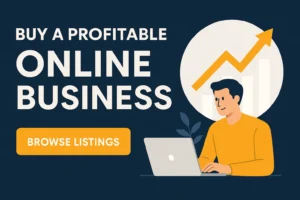Table of Contents
TogglePPC and paid social campaigns are some of the most effective tools for business expansion, and yet, sometimes, there’s no option for an individual but to retreat back to the very basics and employ a more traditional approach toward finding new customers for products or services. Grassroots marketing is, therefore, one excellent way of spreading the gospel concerning a business. It becomes even stronger for small, local businesses that exist through brick-and-mortar establishments.
This article discusses what it takes to practice grassroots marketing, which grows business. But first, let us examine what grassroots marketing is, its difference from guerilla marketing, and reasons why companies should consider adopting it.
What Is Grassroots Marketing ?
Grassroots marketing is an audience-oriented and intention-oriented type of marketing. While some campaigns are designed to reach as many people as possible. Such as that brand awareness campaign on the Display network. Grassroots marketing is about specifically targeting a very niche audience to convince that audience to propagate a message from a business organically.
Grassroots marketing is, for the most part, constituted of social media and virality. Since the whole point of campaigns is that they encourage story sharing, it would make sense that social media plays an important role in that happening.
Guerilla Marketing Vs. Grassroots Marketing: Wherein Lies the Difference?
Grassroots and guerrilla marketing are very easily mistaken for one another since grassroots marketing applies many of the same techniques as guerrilla trading. However, the main difference lies in the audience and intent of the message delivered.
For example, grassroots marketing targets a very specific audience niche or demographic. Guerilla marketing campaigns are generally designed to reach all people through sharing between viral social media, e.g., both might use the same strategies and techniques. Of course, not that it’s the biggest difference, but remember, a ‘real’ grassroots campaign starts with and relies on targeting a particular group of people.
Key Elements of Successful Grassroots Campaigns
Many grassroots campaigns achieve success through the combination of three fundamental elements.
The success of grassroots campaigns relies on simple messages which connect emotionally with people through relatable narratives. The natural implications of these elements generate authentic engagement that allows audiences to become messengers of the message without formal promotion. Brands strengthen their reach through community-led support when they develop narratives which both connect emotionally with audiences and maintain uncomplicated and strong messages.
Clear Messaging
A grassroots campaign depends on clear messaging to achieve its objectives. The campaign’s main purpose becomes accessible to the audience thus promoting higher message engagement while supporting message sharing between viewers. The meaningful content needs to present straightforward points which relate directly to the audience while respecting their core beliefs and personal interests.
The audience responds better to simple language than to jargon or complicated terms therefore it remains crucial to avoid difficult speech. The main concept of a campaign becomes stronger when taglines use a consistent structure and create memorable effects that stick with people. Quick message understanding leads people to become advocates who share information naturally between their social networks.
Emotional Connection
The establishment of emotional connection functions as a strong motivator in grassroots advertising success. Marketing campaigns that address audience emotions or values or personal tales become more noticeable while making connections to their audience. Content which matches audience emotions draws people to interact and spread it through their social networks.
The proper emotional stimulation in marketing through joy, nostalgia, wish and humor promotes consumer interest that leads to brand advocacy and network engagement. Real stories depicting market challenges and aspirations will drive supportive consideration and engagement into brand advocacy which leads supporters to willingly spread brand messages.
Relatable Storytelling
Relatable stories enable community-based marketing efforts to deliver messages in ways that people can understand personally thus boosting their impact. Companies create trust through sharing authentic stories which reflect the experiences of their audience and address their stories and personal values and demanding circumstances. The marketing stratagem makes content more relatable to consumers which leads them toward stronger involvement. Formation of the story needs straightforwardness together with honesty and cultural relevance to succeed. People in the selected audience group are more likely to spread the marketing message through their social networks after identifying their personal situation displayed in it.
Grassroots Marketing Best Practices
In case a business wants to run grassroots marketing, it should keep the following pieces of advice in mind:
- Use social media:
Grassroots marketing has been able to rely almost wholly on Facebook and other social media platforms to reach its target audience. Use it according to the niche to help out the business reach.
- Research the targeted audience:
An audience will be termed niche and thus marketed to only when they are understood inside out by anyone concerned. They can’t sell products and services if they don’t relate to and affect someone’s emotional touch, which matters a lot to the first impression.
- Start local:
It means that this plan basically does commence by bringing a community related to their vicinity directly under one application. Again, unlike what really would count then toward the end of national or global outreach-the person must start little with grassroots marketing. Because of the effectiveness of such campaign agility by the audience with whom the message now travels, this will soon flourish to greater heights.
If businesses are interested in connecting with a local community or particular audience members, they would be well served by finding a cause meaningful to them. A cause-related support opportunity may just widen the doors of access to business recognition while supporting a noble cause.
- Engage the audience:
With the aid of social media, SMS messaging, email newsletters, or any other form of reaching out, encourage customers to connect with them. They will be the ones disseminating messages because they do so. Hence, cultivate a close relationship with the audience.
- Make sharing easy:
They should allow people to do things like use a hashtag to share their experience. With the brand or leave reviews on a business website.
Strategies to Evaluate the Achievement of Grassroots Marketing Practices
Measuring grassroots advertising and marketing campaign success primarily depends on tracking key performance indicators which reveal its outcome. The measurement of engagement and reach stands essential since these aspects help determine how many users touch your content and its distance in spreading. Sharing, liking, commentaries and overall campaign exposure serve as valuable markers to understand how much consumers engage with your content and how far your message reaches.
No successful measurement plan should overlook the monitoring of brand name mentions found on social platforms as well as various online systems. Your logo and campaign success can be measured by the number of times they appear in public discussions thus confirming the natural popularity of your initiatives. Your campaign’s success rate can only be measured through tracking conversion rates which help assess your campaign’s outcomes in terms of revenue and sign-ups and other important goals that lead to your grassroots strategy’s ROI calculation.
Who can Benefit from Grassroots Marketing?
So anyone could adopt a grass-roots marketing strategy; it could be especially beneficial for small businesses. First, focus on a community; they will be loyal to companies that care about their local community. After that, companies can always expand their reach and offer services to other communities as well. On the other hand, plenty of examples show that very large companies. Even some that have been around a long time, can use grassroots marketing. This is why companies must also use it for their worldwide product awareness campaign.
Think Big, Start Small
It could indeed provide a great way to give some of the more appealing grassroots marketing. Techniques and push the company into an unbeatable new customer base. It is hoped that not all these ideas will apply to a business and campaign objectives; hopefully, they will trigger some thoughts on innovating with grassroots marketing that drives a business forward and into new audiences.






